The e-commerce industry is exploding. If you’re considering starting an e-commerce business model, now is the moment to capitalize on all of its perks.
However, before you begin brainstorming ideas for your e-commerce firm, you must choose an e-commerce business strategy. Each e-commerce store has its own business plan. Choosing the appropriate e-commerce business strategy may be difficult for you, especially if you have no prior experience in the field.
Choosing the appropriate e-commerce business model is critical to generating revenue and maintaining the store’s viability. Numerous e-commerce entrepreneurs make the error of launching an enterprise without first establishing their e-commerce business models. Do not get right into the details and begin running a business. Before you begin, conduct strategic planning and identify your online business model.
Before delving into the various sorts of e-commerce business models, it’s necessary to first define e-commerce business models.
Read here about the approximate cost of the development of a mobile app.
What are E-commerce Business Models?
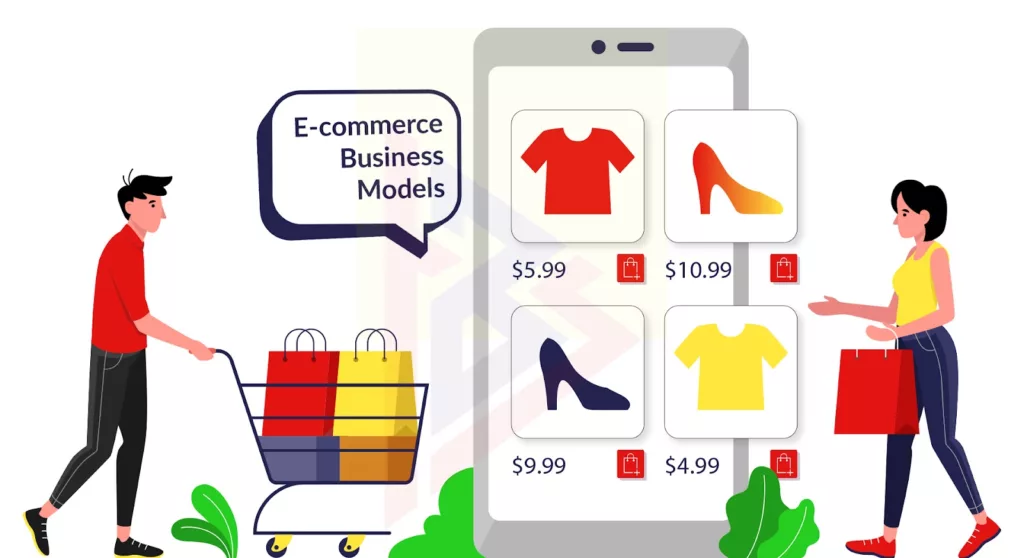
An e-commerce business model exemplifies the way your online firm operates. It all comes down to how your business sells its products and services online.
There are six distinct types of e-commerce business models as follows:
- Business to Government (B2G)
- Business to Business (B2B)
- Business to Consumer (B2C)
- Consumer to Consumer (C2C)
- Consumer to Business (C2B)
- Business to Business to Customer (B2B2C)
You must choose the appropriate e-commerce business model for your business from among these options. To design your e-commerce business model, two concepts must be defined:
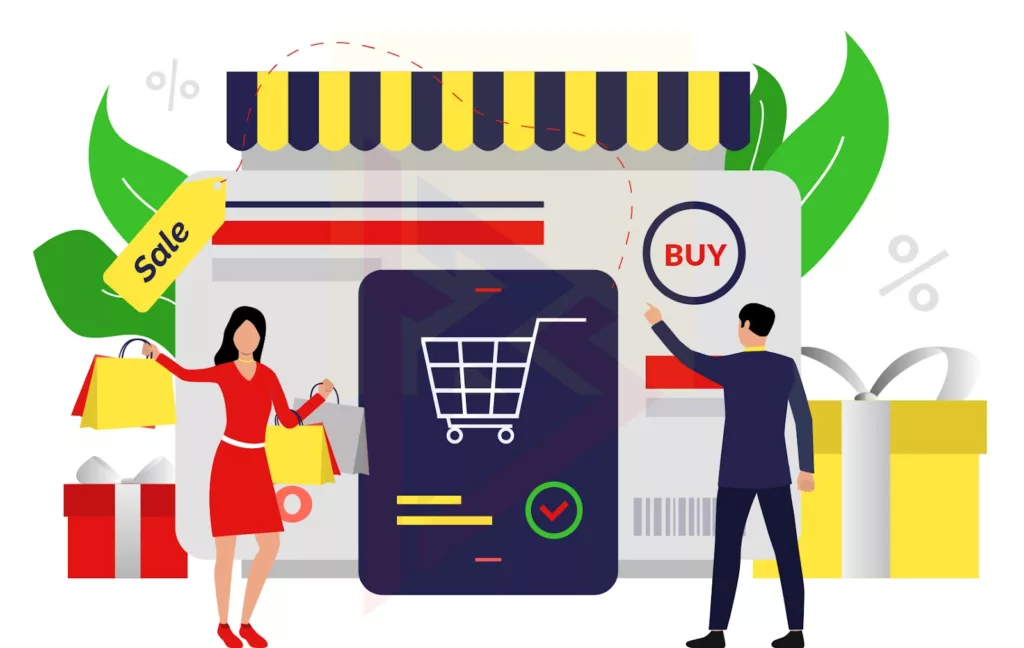
What do You Want to Sell to your Customers?
These two factors will dictate your business model and the manner in which you will attract customers. Additionally, it will determine how your customers interact with you. Apart from these two critical elements, you must also specify your distribution network, payment methods, and e-commerce development.
To whom would you like to market your goods and services?
The first thing you must establish is a consumer base. To whom would you like to market your goods and services? Are you considering selling products to other firms or consumers? Are you interested in selling goods or services to the government? You must first establish it.
What do You Want to Sell?
Additionally, you must select what you wish to sell. You may sell almost anything online in the online commerce industry. You can sell tangible things like shoes or clothing, digital products like ebooks, or services like e-commerce development.
Read here, why your next app should be developed in Flutter.
Physical Products
Almost every e-commerce portal, from Amazon to eBay, sells tangible things. According to e-commerce experts, tangible things generate the most revenue in the sector.
Even in the field of tangible products, you must identify what you wish to market. For instance, you may wish to offer automobile accessories, books, or anything else. If you have a passion for books, you can establish an online bookstore. If you’re more interested in fashion, you may sell fashion accessories. You may convert your passion into a profitable business through online commerce.
Once you’ve determined which niche to target, the following step is to identify opportunity gaps. Discover the facets of the industry that remain unexplored. Additionally, determine the pain points that your target clients are experiencing. It will provide you with a good concept of what to sell online.
Now you must engage e-commerce developers to build your website. Additionally, you must select the appropriate platform for website development, such as Magento or Shopify.
Digital Products
Customers can purchase digital products online. Content writers and e-commerce developers, for example, can sell their digital products online. They can create online stores to sell their products.
Services
You can sell online the services of people such as house cleaners, hairstylists, massage therapists, and carpenters if you have a team of experts. Nowadays, people love ordering online, and an e-commerce store that offers all these features will make their lives more convenient and comfortable.
Read here about the approximate cost of the development of a mobile app.
Let’s examine different e-commerce business models.
1. Business-to-Business (B2B)
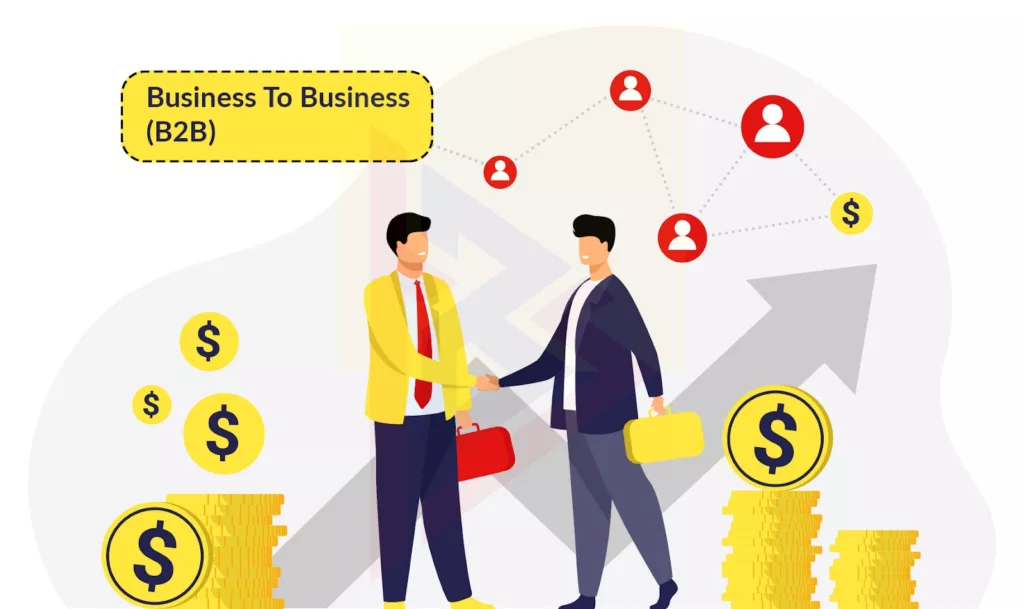
For instance, suppose you sell a software product such as SharePoint Online or an employee self-service portal. Who would purchase such software? These products are geared toward businesses, as they address business demands. As a result, your concept is referred to as the Business to Business Model. You must create a B2B strategy that is effective for your firm.
One of the difficulties of the B2B e-commerce business model is convincing established enterprises that your products are superior to those they already use. You’ll need a tried-and-true sales plan to assist you in this sector.
However, this paradigm does have one advantage. Typically, your products will be ordered in bulk. Additionally, repeat orders are rather typical in this approach. All you need to do is ensure that your products and services are of the highest quality, and you will enjoy this benefit.
2. Business-to-Consumer (B2C)
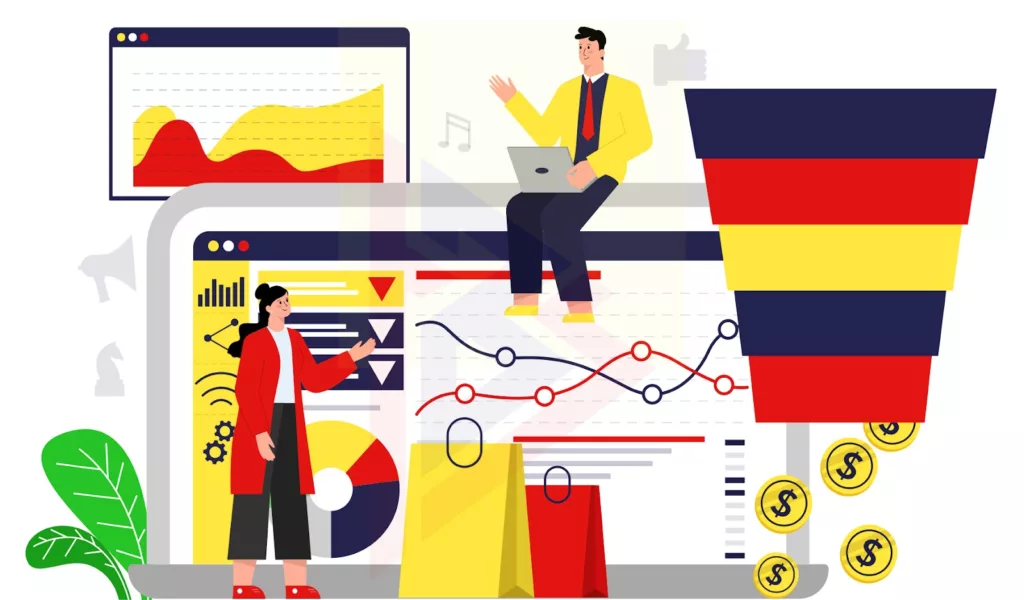
The business-to-consumer e-commerce approach is ideal for merchants who sell products primarily to consumers. Here, the buyer will visit your website and purchase stuff.
Amazon, eBay, and other well-known e-commerce companies epitomize the Business to Consumer e-commerce business model. Here, you must focus on resolving clients’ pain areas in order to earn their trust. When you provide them with high-quality products that answer their concerns, they will develop a sense of trust in you.
3. Consumer-to-Consumer (C2C)
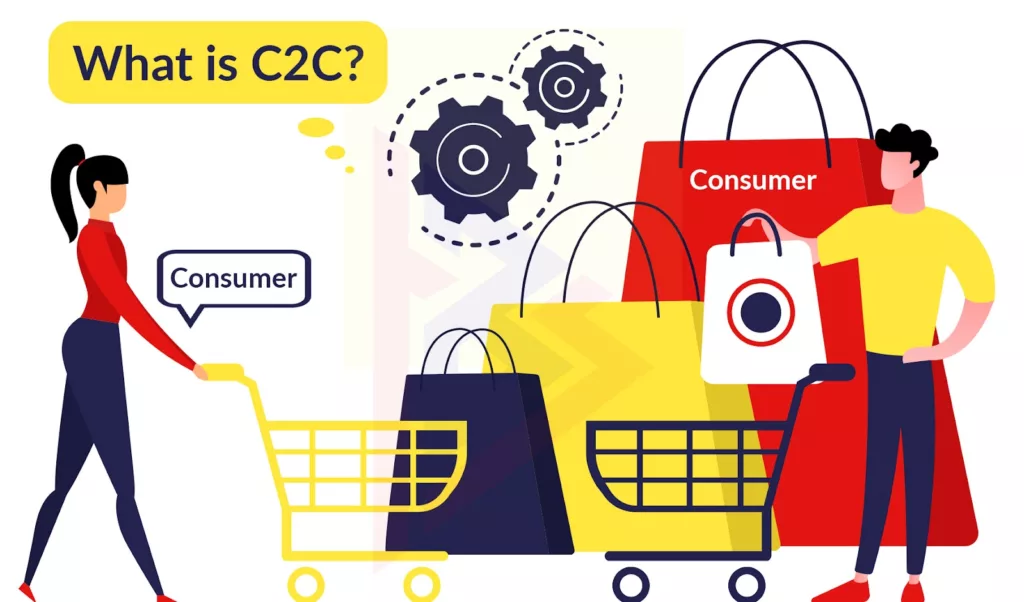
This is a less common e-commerce business strategy than B2B and B2C. It is a novel concept that has emerged in recent years. Persons wishing to offer their items to other individuals. Craigslist is an example of the C2C concept in action.
Users can rent, sell, trade, and purchase goods and services on this platform. Each time a transaction occurs, the gateway will earn a commission. This platform may run into legal difficulties due to the model’s complexity. You must properly plan it before embarking on it.
4. Consumer-to-Business (C2B)
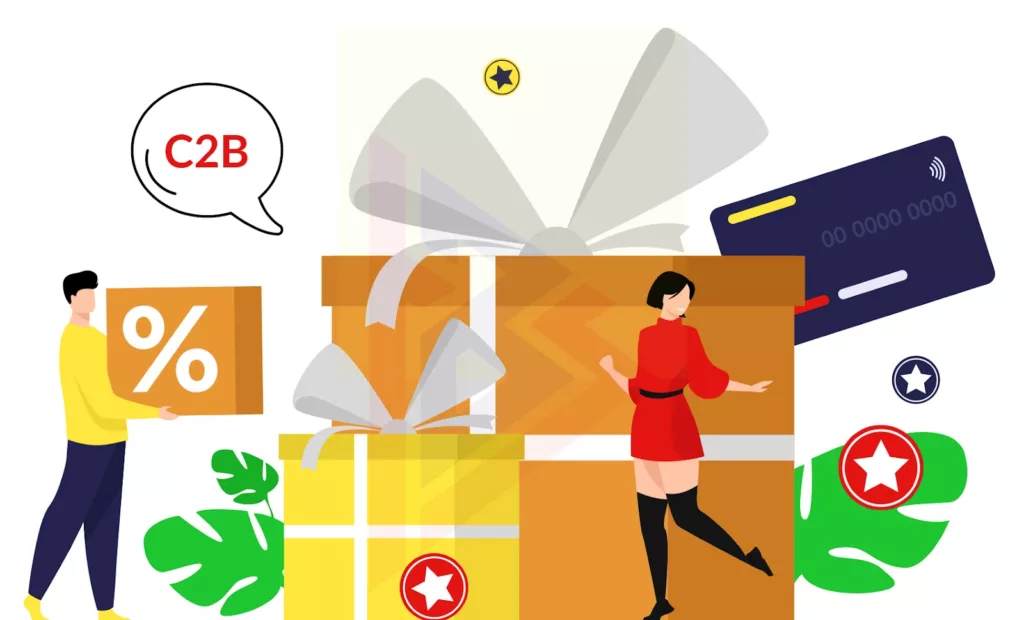
After the introduction of platforms catering to freelancers, the consumer-to-business e-commerce model has become popular. Businesses and freelancers connect on this site, and if all goes well, individuals will begin working for businesses for mutually agreed-upon prices. You may require the services of an e-commerce SEO expert to increase traffic and sales to your website.
Typically, freelancers are people, while clients are businesses. As a result, it is referred to as the C2B e-commerce business model. The best examples of these consumer-to-business e-commerce business models are affiliate marketing platforms, freelance markets, and auction websites.
5. Business to Government (B2G)
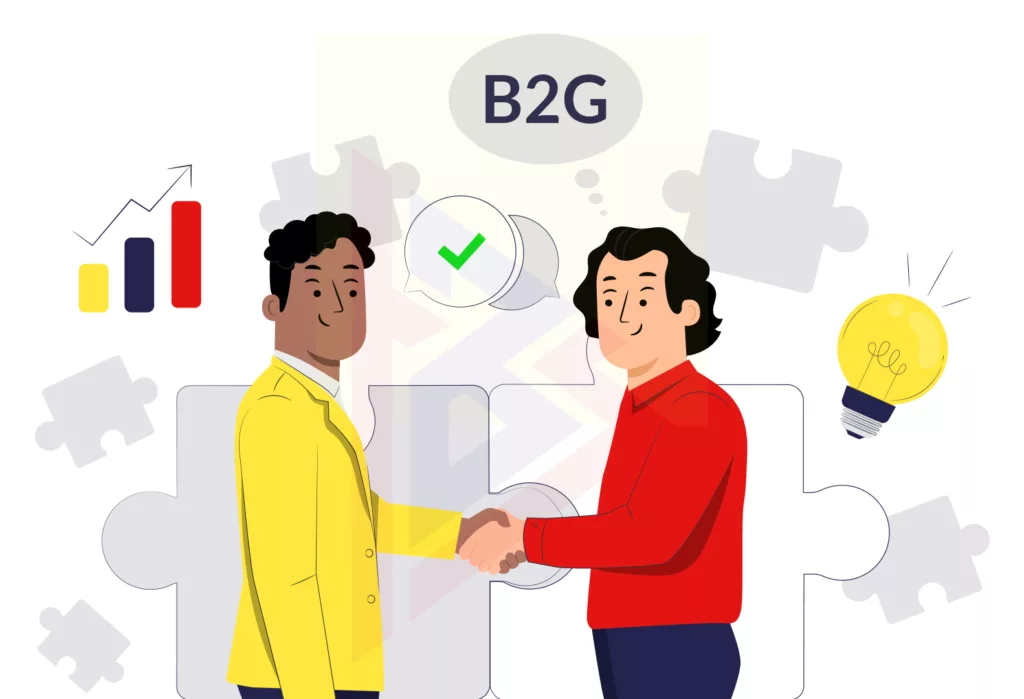
The Business to Government model refers to when a business creates and sells products or services to government entities. Generally, if you wish to follow this approach, you must bid for government contracts.
Typically, governments submit project ideas, and businesses provide estimates in response to such requests. To obtain a work, you must offer the best, most cost-effective proposal. Certain small government organizations may contact you for certain items or services.
6. Business to Business to Consumer (B2B2C)
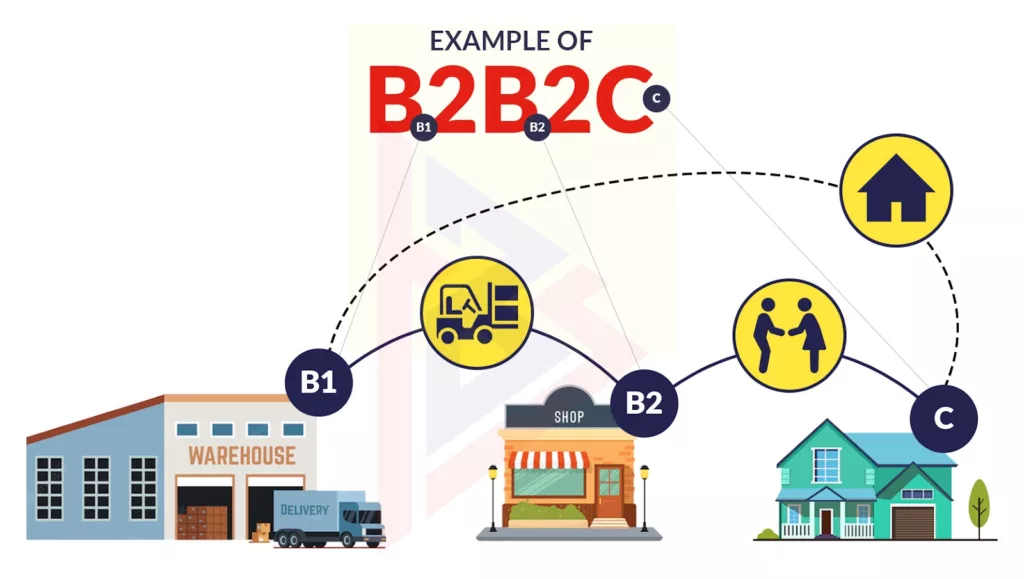
To begin, a firm sells its products or services to another. The business then sells its goods or services to an individual. This is a concise definition of a business model for B2B2C e-commerce.
To begin implementing this e-commerce business model, you must first collaborate with another business to sell your products and services. If your products are sold through the partner firm, you will earn a commission on each sale.
This e-commerce business plan is advantageous if you are fresh to the industry and want to acquire new customers. When your advertising and marketing budgets are limited, you can use this technique to increase sales.
Conclusion:
Determining the optimal e-commerce business plan for your enterprise is critical. It is critical to the success of your internet business. Ascertain that you comprehend each of these e-commerce business models and then select the one that is most appropriate for you.
You can alternatively contact us and discuss your business plan, our experts will guide you in the best possible way.









